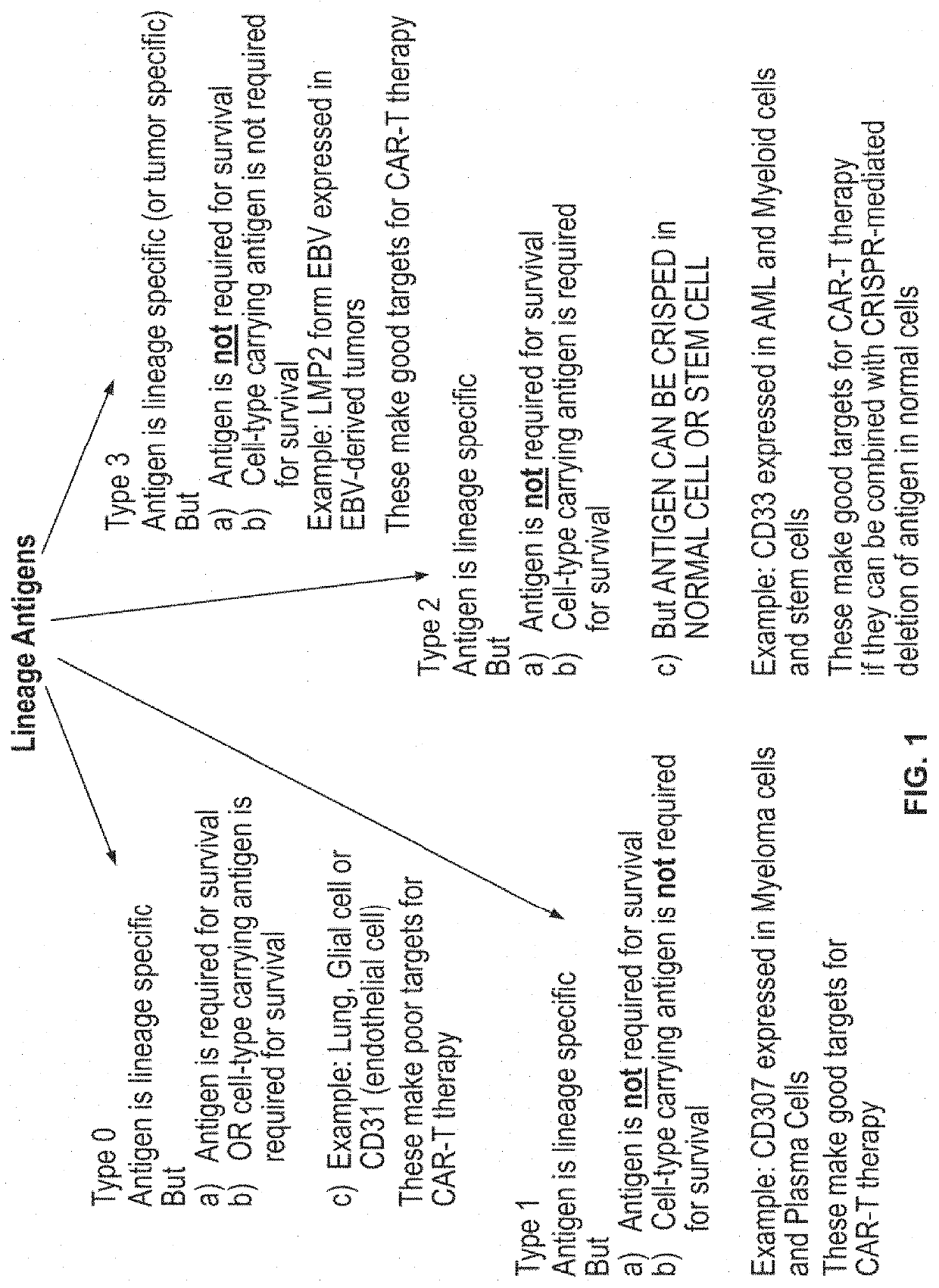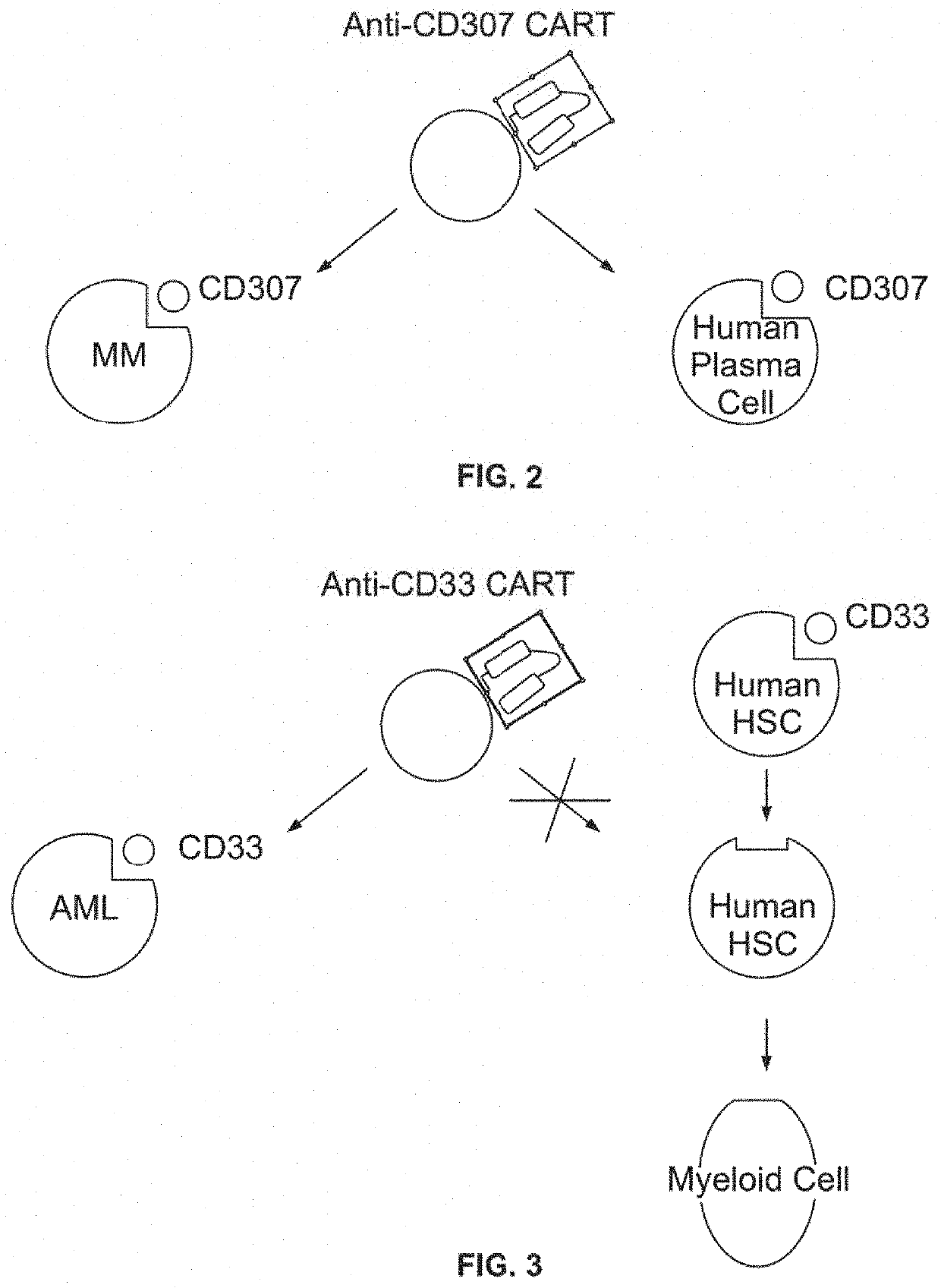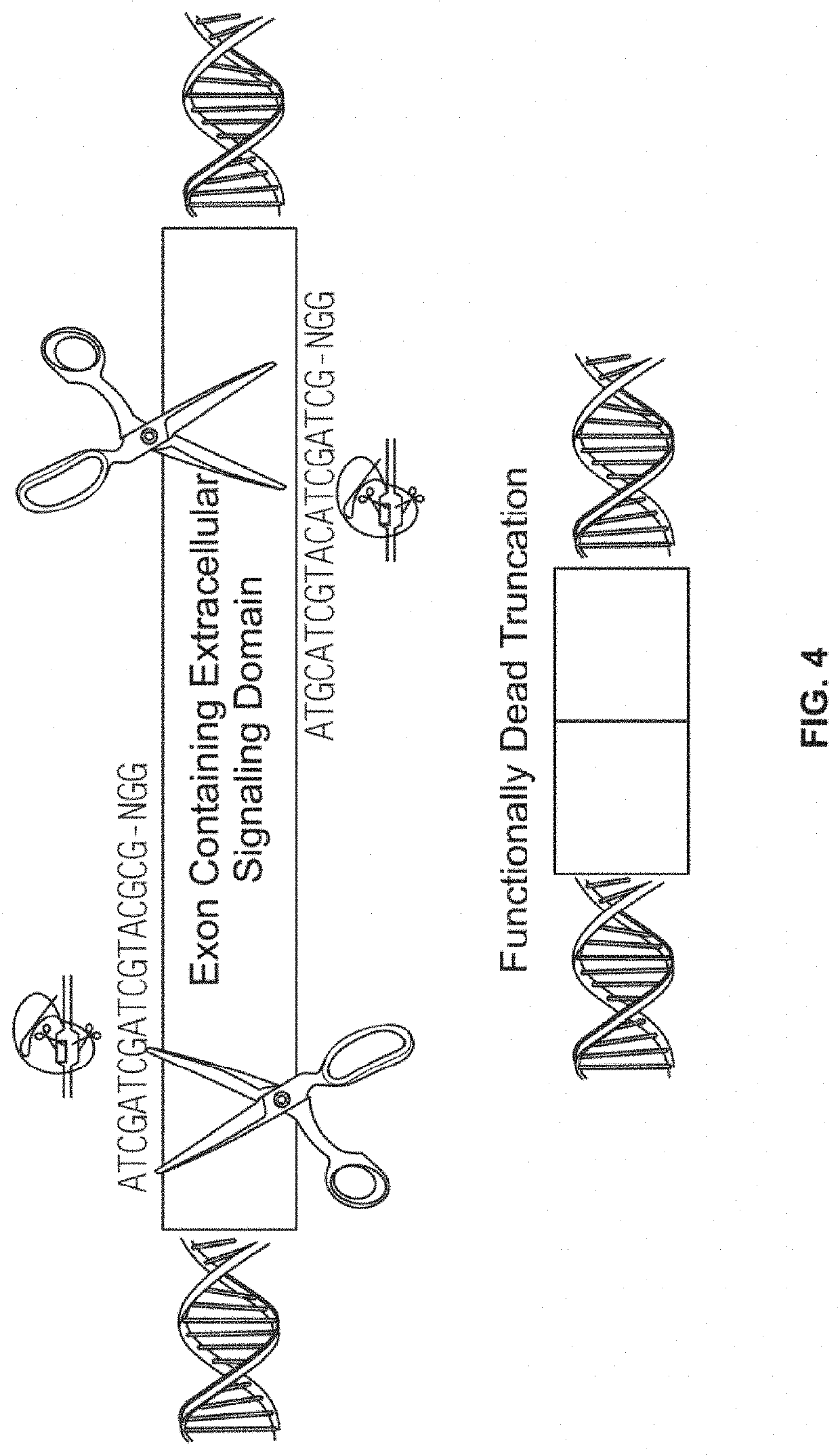Compositions and methods for inhibition of lineage specific antigens
a technology of antigens and compounds, applied in the direction of drug compositions, peptides, genetically modified cells, etc., can solve the problems of poor current care, poor outcomes in older patients who cannot receive intensive chemotherapy, and difficult to achieve effective t cell therapies against cancers. the effect of reducing the expression of cd33
- Summary
- Abstract
- Description
- Claims
- Application Information
AI Technical Summary
Benefits of technology
Problems solved by technology
Method used
Image
Examples
example 1
Deletion of CD33 in a Human Leukemic Cell Line
[0449]In order to test the ability of CRSPR-Cas9 system to target CD33 in vitro, human leukemic cells K-562 were co-transfected using Neon™ (Thermo Fisher Scientific) with Cas9-GFP (PX458, S. pyogenes) and a guide RNA containing NGG PAM sequence (FIG. 4) where guide RNA was designed to target hCD33 genomic sequence. 48 hours post-transfection, cells expressing Cas9 were identified and isolated using FACS sorting for GFP. Cells were then incubated for 96 hours and tested for CD33 expression by flow cytometry (FIG. 5). Flow cytometry plots using an anti-CD33 antibody show CD33 expression by the K-562 cells before (top plot) and after (bottom plot) delivery of Cas9 vector and guide RNA. As shown in FIG. 5, 98% of the cells lacked the CD33 expression following transfection.
[0450]This example demonstrates the efficient deletion of CD33 using CRISPR-Cas9 system in human leukemic cells.
example 2
Deletion of CD45 in Human Leukemic Cell Lines
[0451]The CRISPR-Cas9 system was used to target CD45RA in vitro. Briefly, TIB-67 reticulum cell sarcoma mouse macrophage-like cells were co-transfected using Neon™ reagent (Thermo Fisher Scientific) with Cas9-GFP (PX458, S. pyogenes) and CRISPRs gRNAs (containing the “NGG” PAM sequence) targeting hCD45RA genomic sequence. 48 hours post-transfection, cells expressing CRISPR-Cas9 system were identified and isolated using FACS sorting for GFP. Cells were then incubated for 96 hours and tested for CD45RA expression (FIG. 6). Flow cytometry plots using CD45RA antibody show CD45RA expression before (top plot) and after (bottom plot) delivery of Cas9 vector and guide RNA.
[0452]Similar to Example 1, where CD33 expression was successfully reduced in leukemic cells, findings in this Example indicate efficient targeting of CD45RA using the CRISPR-Cas9 system.
example 3
Cell-surface Lineage-specific CD33 in Acute Myeloid Leukemia (AML)
[0453]The present example encompasses targeting of the CD33 antigen in AML. The specific steps of the example are outlined in Table 6.
TABLE 6Outline of the Experimental DesignI. Autologous CD33 1. Generation of anti-CD33 CAR constructstargeted (CAR) T-cell 2. Isolation of CD8+T Cells from a Patienttherapy3. Preparation of anti CD33 CAR T Cells4. Reinfusion of CD33 CAR T cells into aPatientII. Autologous 1. Isolation of Hematopoietic Stem CellsHematopoietic Stem 2. CRISPR-Cas9 Plasmid Targeting CD33Cell Transplant Using 3. Generation of CD34+CD33− cells viaCD34+CD33− CellsCRISPR-CAS System4. Reinfusion of CD34+CD33− cells into aPatientIII. Continued treatment of a patient with a CD33 antibody attached to a toxin (immunotoxin)
I. CD33-Targeted Chimeric Antigen Receptor (CAR) T-Cell Therapy
[0454]A. Generation of Anti-CD33 CAR Constructs
[0455]The chimeric antigen receptors targeting CD33 described herein may consist of the...
PUM
| Property | Measurement | Unit |
|---|---|---|
| dissociation constant | aaaaa | aaaaa |
| dissociation constant | aaaaa | aaaaa |
| dissociation constant | aaaaa | aaaaa |
Abstract
Description
Claims
Application Information
 Login to View More
Login to View More - R&D
- Intellectual Property
- Life Sciences
- Materials
- Tech Scout
- Unparalleled Data Quality
- Higher Quality Content
- 60% Fewer Hallucinations
Browse by: Latest US Patents, China's latest patents, Technical Efficacy Thesaurus, Application Domain, Technology Topic, Popular Technical Reports.
© 2025 PatSnap. All rights reserved.Legal|Privacy policy|Modern Slavery Act Transparency Statement|Sitemap|About US| Contact US: help@patsnap.com



